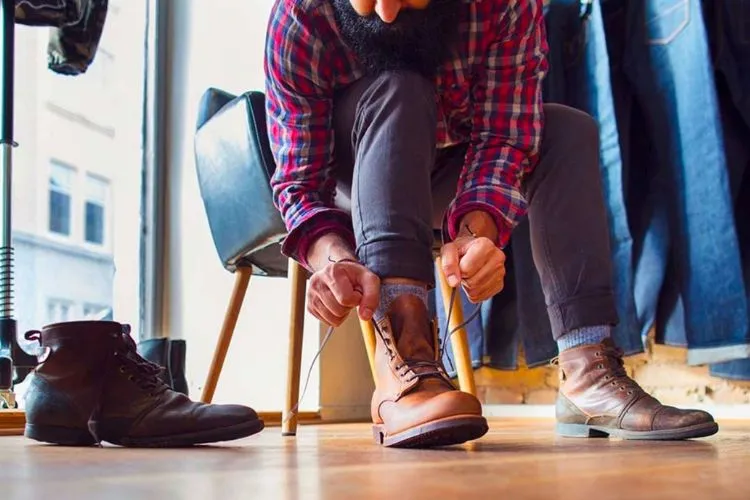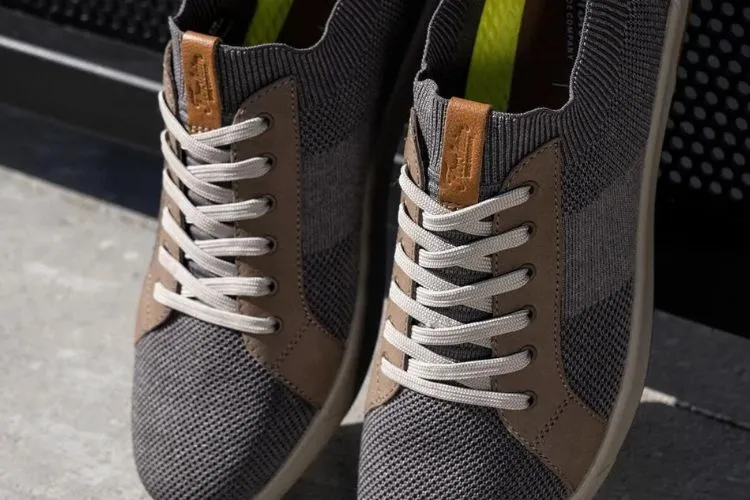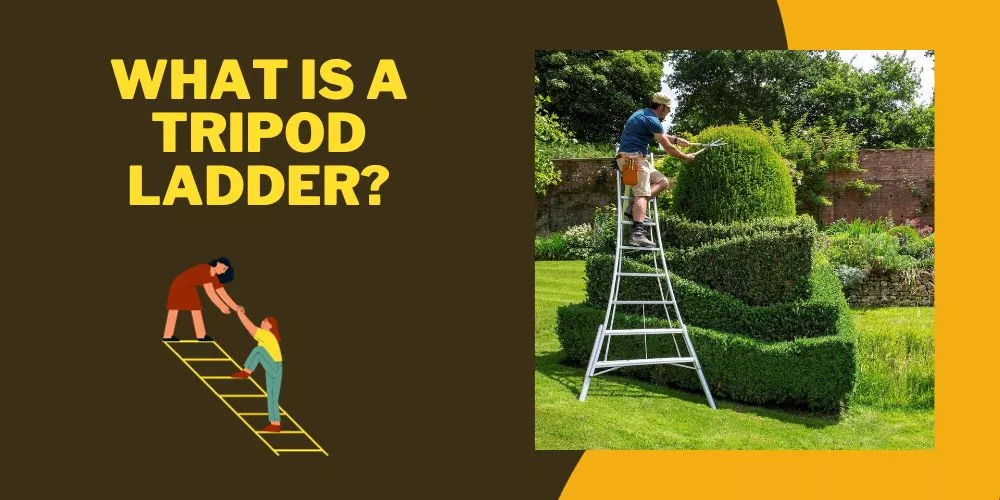Ladder lace might not be a term that everyone is familiar with, but it holds a wealth of meaning and history in its intricate pattern. It’s more than just a creative way to tie your shoelaces.
So, what does ladder lace mean?
Ladder lacing has roots that run deep in cultural symbolism and identity. This article aims to decode the essence of ladder lace and its various implications in both past and present contexts.

What Does Ladder Lace Mean?
Traditionally, ladder lacing was a practical feature of military boots. Its design allowed for a tight and secure fit which was vital for soldiers. It’s this functionality that first spread its use beyond the battlefield.
As soldiers returned home, they kept their lacing habits, introducing them into everyday fashion.
In time, ladder lace became more than just a method. It grew into a symbol. Various subcultures adopted it, each infusing it with a new layer of meaning. Some linked it to strength and comradeship, others to rebellion against mainstream fashion.
Ladder Lace in Subcultures
Perhaps the most vibrant chapter in the story of ladder lace is its adoption by subcultures. The punk movement, known for its anti-establishment views, gravitated towards ladder lace as a visual stance of defiance. It was not just a fashion statement but a marker of identity.
Similarly, within skinhead communities, lacing patterns, including ladder lace, held specific meanings. They served almost as a code, communicating beliefs and affiliations.
However, these codes have mostly fallen out of practice, and today, the interpretation of ladder lace is more connected to style than ideology.
How to Identify Ladder Lace
Ladder lace is unique in its appearance. The laces run straight across and then vertically, creating a design that resembles the rungs of a ladder.

This method is distinct from the crisscross or zigzag of more traditional lacing. To the uninitiated, ladder lacing can almost give the illusion of a continuous piece rather than a single string weaving through eyelets.
How to Ladder Lace Your Boots
Creating ladder lacing is a simple albeit meticulous process. Start with equal lengths of lace on either side of the bottom eyelets. Weave the ends straight across and up through the next highest set of eyelets.
Then, take the ends straight across again but over the vertical part of the laces. Continue in this fashion, always ensuring the lace passes over the vertical sections. It’s a process that requires patience and slightly longer laces than other methods.
The Modern Landscape
Today, ladder lacing is seen more as a fashion choice than a symbol of subculture affiliations. It’s a nod to unique personal style and a way to stand out. While its meaning may have shifted from its origins, ladder lacing still holds a special place in the hearts of those wanting to pay homage to a certain aesthetic or historical reference.

Despite its association with particular historical contexts and subcultures, ladder lace is not shackled by its past. It’s enjoyed for its design qualities, and its usage has transcended its original cultural significance.
People of all backgrounds can appreciate it as an artistic and personalized lacing style.
DIY Guide: Mastering the Ladder Lace
Achieving the distinctive look of ladder lace on your shoes can be a simple yet rewarding DIY project. Follow these step-by-step instructions to transform your footwear:
- Start at the Bottom: Insert the lace ends downwards into the bottom eyelets from the top, leaving an equal length of lace on both sides.
- Straight Across: Pull both ends straight across and then up into the opposite eyelets.
- Go Vertical: Take the lace on the right side up on the inside and out through the next eyelet up on the same side. Repeat on the left.
- Cross Over: Now, pull both ends straight across on the outside and then up into the next set of eyelets, mirroring step 2.
- Repeat: Continue this pattern: vertical on the inside, horizontal on the outside, up to the top.
- Tighten and Adjust: Once at the top, adjust the lacing for even tension and to ensure it resembles ladder rungs.
This straightforward method requires patience and slightly longer laces but results in a visually appealing and snug fit, enhancing both the form and function of your shoes.
Frequently Asked Questions (FAQs)
What Is the Difference Between Ladder Lace and Other Lacing Methods?
Ladder lace distinctly features horizontal lines that resemble the rungs of a ladder, unlike other methods that typically involve a crisscross pattern.
How Can I Ladder Lace My Own Shoes?
To ladder lace your shoes, you will pass the lace horizontally and then move straight up on the inside, laying the next horizontal line above it. It requires longer laces than what you might use for crisscross lacing.
Is There Any Current Cultural Significance to Ladder Lace?
While its cultural significance has waned since its peak in the subcultures of the 70s and 80s, ladder lace still holds historical weight and can be a stylistic nod to those times.
Can Ladder Lacing Be Done on Any Type of Footwear?
While mostly seen on boots, ladder lacing can technically be applied to any footwear with eyelets that allow for the laces to run straight across and vertically in the required pattern.
Conclusion:
In essence, ladder lace transcends its original function of securing footwear, evolving into a symbol rich with cultural significance.
From its military origins to its adoption by various subcultures, ladder lace serves as a testament to the profound ways something as simple as the method we use to lace our shoes can reflect broader societal narratives and personal identities.
Today, while its cultural connotations may have softened, ladder lacing continues to be a stylistic choice for those who appreciate its aesthetic and historical depth, making it a timeless feature in the world of fashion and beyond.


